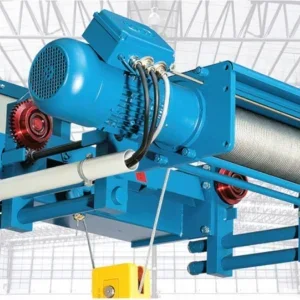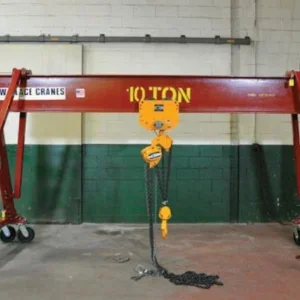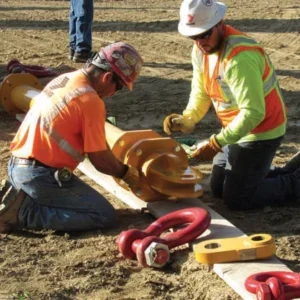The coal loader, weighing 1,030t and standing 49m high, was built on the Brisbane River and moved by a heavy lift ship to the Dalrymple Bay Berth No 3. The operation was synchronised to coincide with a low tide to give a mast clearance of just 2.5m under the Brisbane Gateway Bridge.
Control Techniques Australia was awarded the contract for the control of all variable speed AC motors on the machine by contractors Clough Downer JV. Its solution was for a scheme whereby all drives communicated between themselves and the controlling PLC via DeviceNet, with encoder feedback gave closed loop motor control and all drives featured additional on-board processing.
“Despite the size of the coal loader, space for drives cubicles was limited,” says Ananda Sebastian, managing director of Control Techniques Australia Pty, based in Sydney.
“The client was pleased with our solution based on Unidrive AC drives and drives and switchgear were mounted back-to-back in specially designed compact cubicles,” he continued. “We had to commission the drives for the boom before it left the dock in the Brisbane River so that the boom could be lowered to pass under the Gateway bridge.”
The 7,200t per hour shiploader travels alongside a berthed ship on rails on a 200m wharf (one of three) fed by a 3.8km long jetty – the longest bulk coal jetty in Australia. Reach across the width of the holds is provided by a shuttling head on the boom to ensure even loading and a telescoping loading chute minimises the generation of dust. This chute can direct coal through 360 degrees around the hold to make sure the hatch is fully and evenly loaded.
The telescopic chute winch system features two 55kW Unidrives, one for position control, one in regenerative mode, to feed power back to the supply during braking. The boom luffing winch is a 500kW regenerative system, with three Unidrives power sharing and a further three in regenerative mode. The 55kW boom shuttle winch system is also regenerative with a position control Unidrive and one in regen mode.
The long travel of about 200m along the berth is provided by 28 motors controlled in synchronism by four 160kW Unidrives with a further four units giving power regeneration.
Using feedback from the drives’ software to the controlling PLC via DeviceNet, the PLC controls the reeling of the cable and hose reels to maintain a constant feed angle on the cable and hose whether reeling in or paying out.
According to Control Techniques, Unidrive is “the world’s first truly universal AC drive.”
It encompasses Open Loop V/F, Open Loop Sensor-less Vector, Closed Loop Flux Vector and AC Brush-less Servo, all in a single package. Each control mode can be “easily and quickly changed from the on-board keypad or through UniSoft, a Windows-based configuration software tool,” it adds. So, it continues, users need only specify, stock and commission one AC drive product – Unidrive – from 0.75 kW to 1 MW.
In addition, Unidrive is configurable as a regeneration module for use with another Unidrive and has a choice of plug-in option modules to add on-board processing power, communications with all the industry-leading network protocols and additional I/O for unbeatable flexibility in use.






